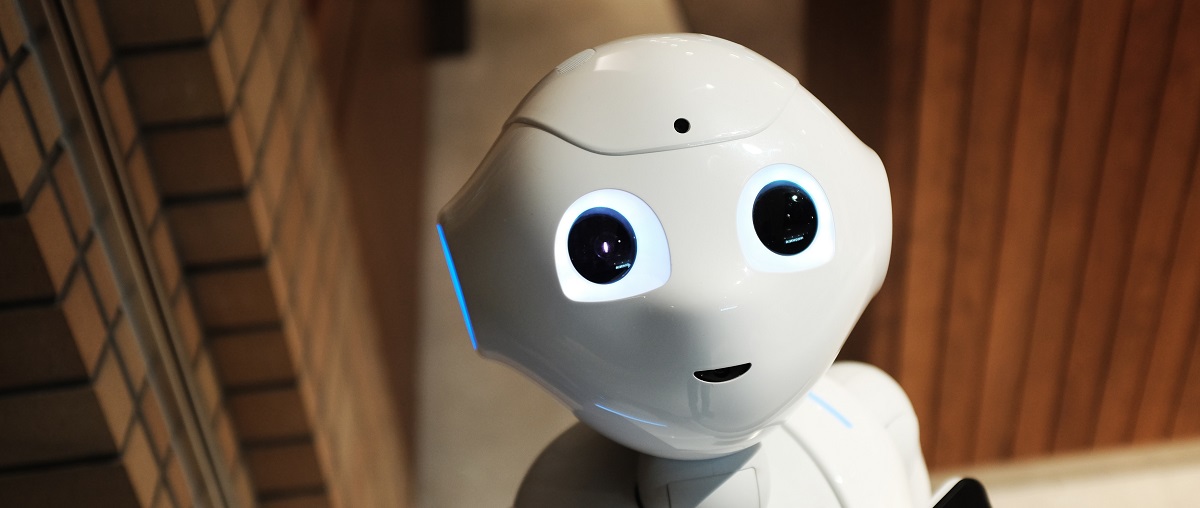When you think about humans and robots living together, you think about humanoid robots able to do cool human tricks, but with limited real world applications.
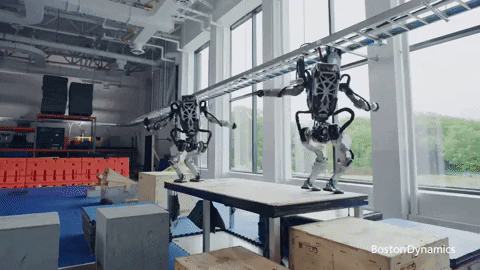
In reality, human actions are best done by humans, while tasks that are difficult to be done by humans are increasingly being done by robots. Contrary to popular belief, the first applications for robots were for predictable and repetitive tasks, done by non-humanoid robots. These robots are more common than you think.
Before we started Vested, there was a very brief period where we explored the feasibility of creating a robot-as-a-service startup. The idea was to import robot arms from China, install them in a factory somewhere (at the time, and still true now, there’s a labor shortage), and garnish wages. We wanted to call it H.A.A.S., an homage to our alma mater and short for Hardware as a Service.
These robot arms are an evolution of the large industrial robots you typically see in automotive assembly lines. Those automotive assembly line robots are specialized for specific tasks, require complex programming and calibrations, and are highly powered (as a result, you need a physical barrier to separate the robot arm from humans, typically in the form of a cage). In contrast, these new age robot arms:
- Can be taught multiple skills through training (guiding them through repeat motions)
- Do not require complex programming
- Are low powered such that they can co-habitat in the same space as human co-workers
These new traits enable them to be easily placed within existing factories, without significant capital expenditures, enabling participation of small and medium sized businesses. Nevertheless, despite bold proclamations in the past few years that co-bots (robots working side by side with humans) will be everywhere, they still haven’t gained significant adoption.
Other forms of robots are gaining popularity, however.
Driving robots
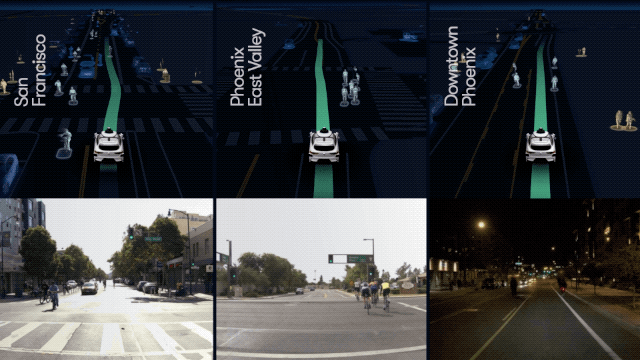
Autonomous vehicle services are increasingly more common. Waymo recently announced that their driverless car service is expanding to San Francisco. This is the second largest city that Waymo’s service (without a human safety driver present) has expanded into (it has been operating its driverless car service in the Phoenix, Arizona, area for two years now). This marks the first time a company has operated a driverless ride hailing service in multiple cities.
For an in depth discussion on how Waymo’s approach to full autonomous driving is different from Tesla’s.
Aerial Drones
You want your stuff and you want it now. One way to fulfill instant gratification is to offer really short delivery times, employing gig workers. This is a trend that is exploding in big cities in Europe, the US, and India. These companies are raising big investments from VCs with unproven business models.
Another way to tackle the problem is with drone delivery. Wing, an Alphabet ( Google) company innovating the drone space, operates drone deliveries in three countries (Australia, Finland, and in the US). It delivers prescription drugs, coffee, and food.
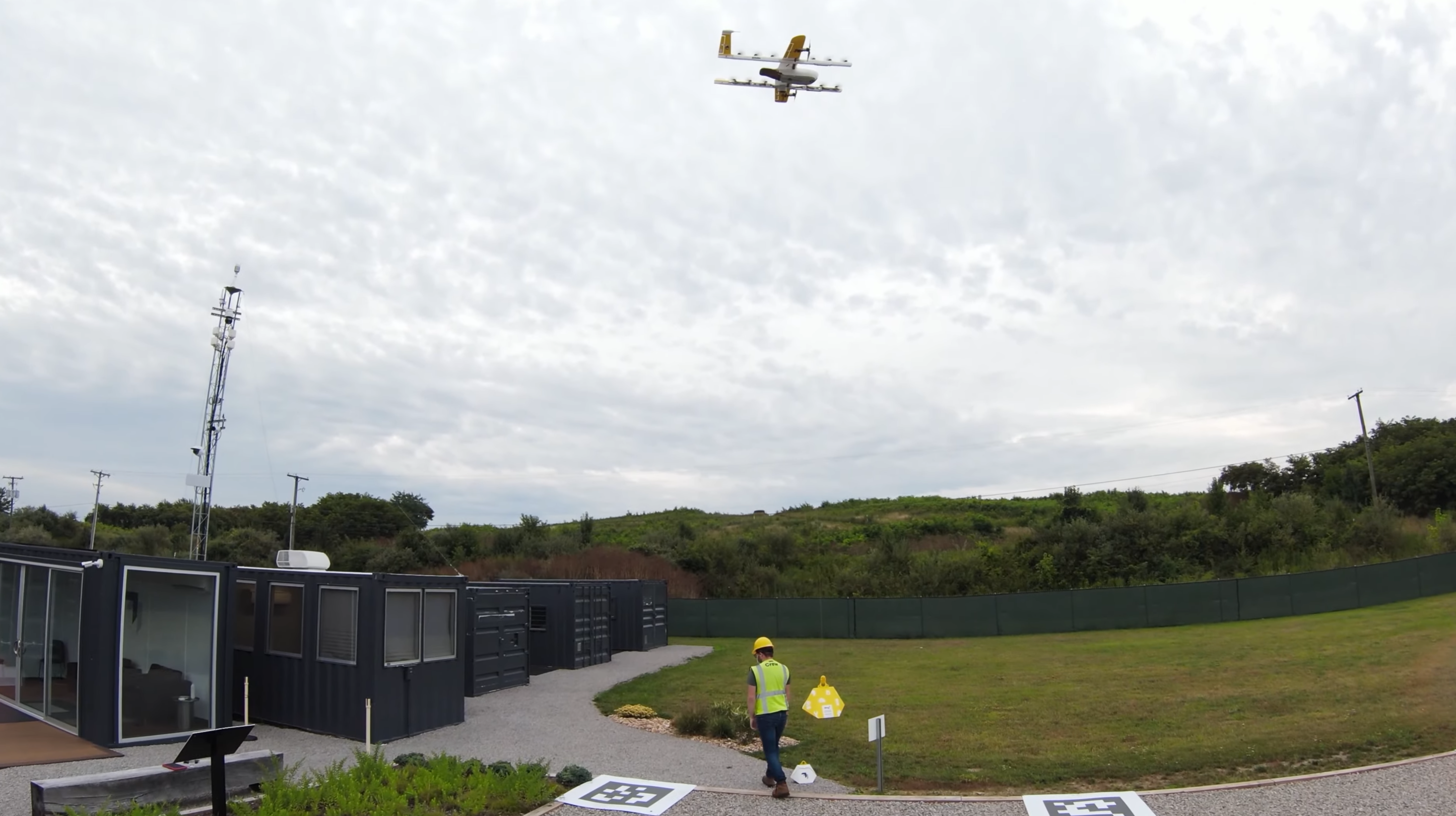
Wing’s pace of delivery is accelerating. It took the company more than 2.5 years to make 100,000 deliveries, and only 6 months to make its second 100,000 (mostly in Australia). It can, on average, travel 6 miles (9.7 km) in 6 minutes – much faster than a gig worker.
When thinking about drone delivery, one of the top concerns that comes to mind is privacy. Interestingly, to protect privacy, Wing’s drones are equipped only with low-resolution, black and white cameras used for automated navigation. These drones cannot recognize people and do not have a live feed that operators have access to in order to supervise flights.
Another company, Zipline, a drone logistics startup, has been operating in Rwanda and Ghana for several years, delivering blood and medical supplies via fixed wing drones (these drones do not land, rather they drop their payload using parachutes – see below). Last year the company announced a partnership with Walmart to deliver healthcare items in the US.
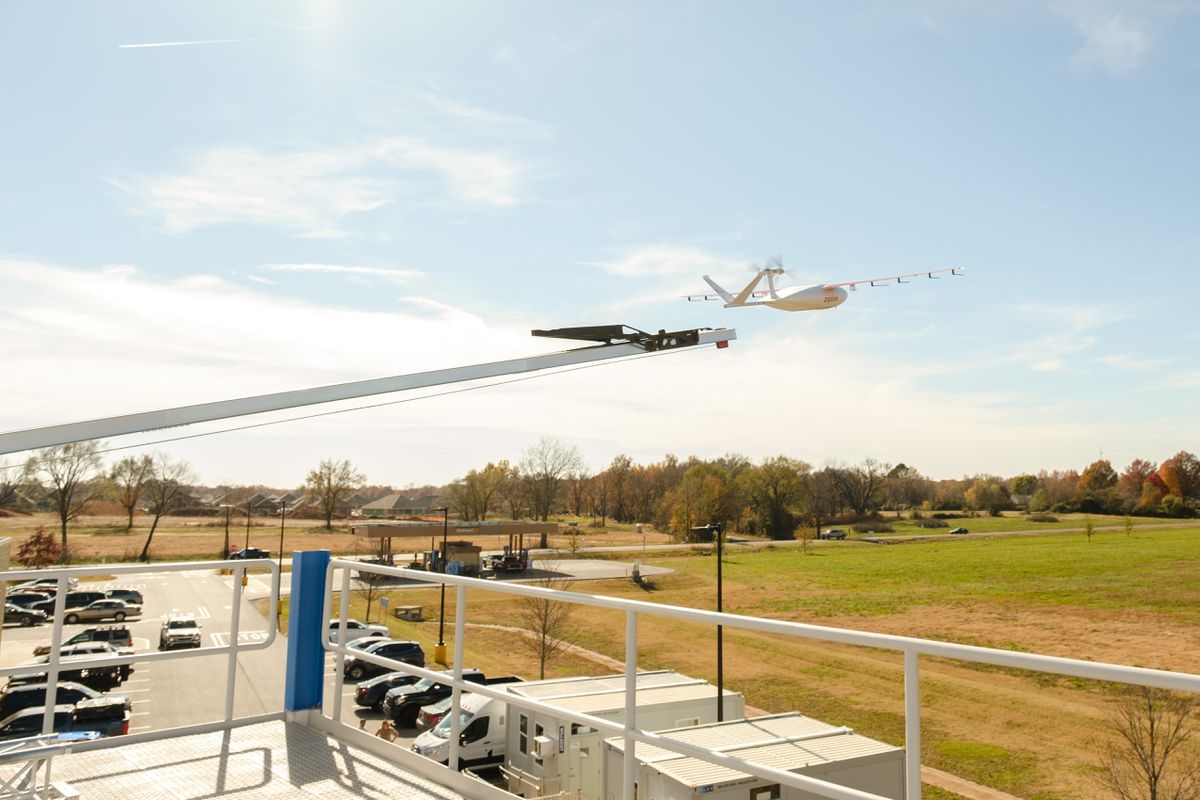
And of course, there’s always Amazon. Despite announcing its drone delivery program (Prime Air) almost a decade ago (2013), Amazon still has not launched commercially. This year, Amazon plans to invite customers in California and Texas to try out the latest iteration of Prime Air. The goal is to achieve 12,000 test flights by the end of 2022.
Warehouse robots
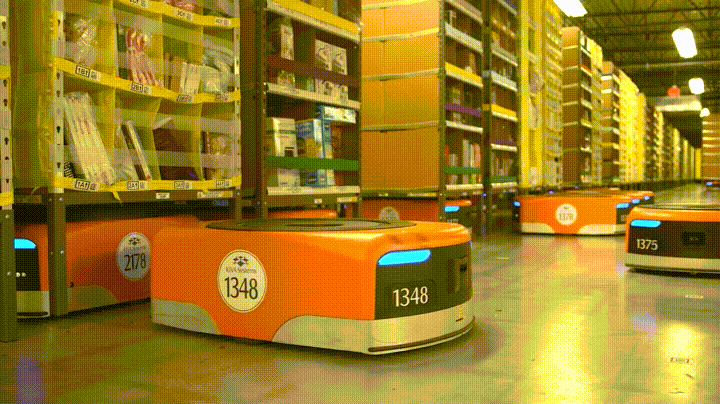
You cannot get 2-day prime delivery without robots. In 2012, Amazon bought a warehouse automation solution called Kiva robots. Amazon deemed Kiva’s technology to be such a difference maker, so much so that it ended Kiva’s contract with other e-commerce players after the purchase, keeping the technology for itself.
Ten years later, warehouse automation that Kiva pioneered is more commonplace in other e-commerce giants. The process employs thousands of robots that move shelves around. It used to be the case that human workers walked 10 – 20 miles per day, picking items off the shelves to fulfill orders. Nowadays, they are stationary. Robots carry shelving units to the human workers, following a carefully choreographed dance.
Pill dispensing robots
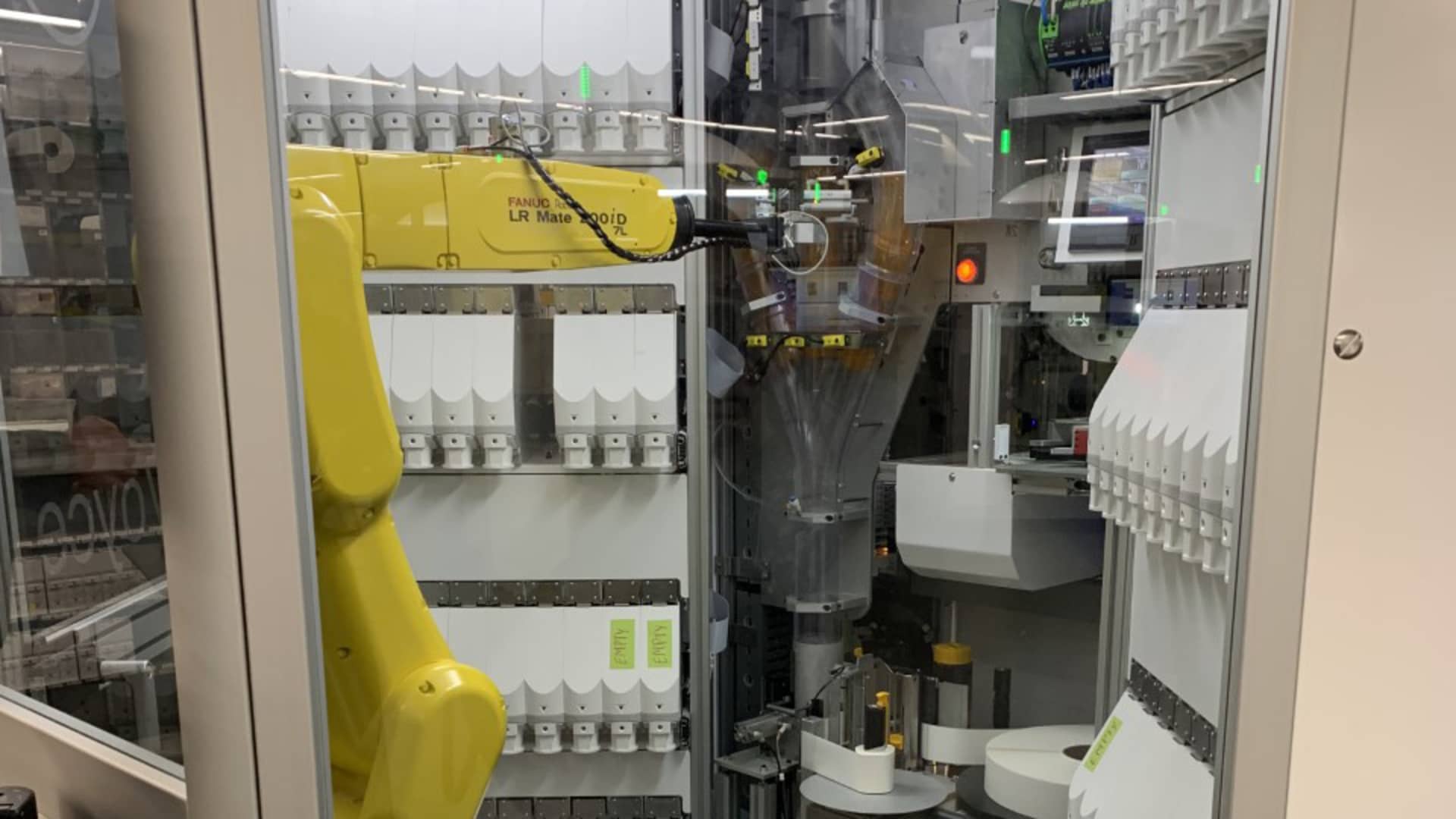
Walgreens is transforming how it fills prescriptions. The company is opening robot powered micro fulfillment centers where robots dispense and count pills. Each robot can fill about 300 prescriptions in an hour, more than a typical pharmacy can do in a day. The company expects that in a few years, about 50% of its total prescription volume could be filled by robots, freeing up human pharmacists to do the more human aspect of the job (consulting patients about their medications, explaining potential side effects, etc).
Burger flipping robots
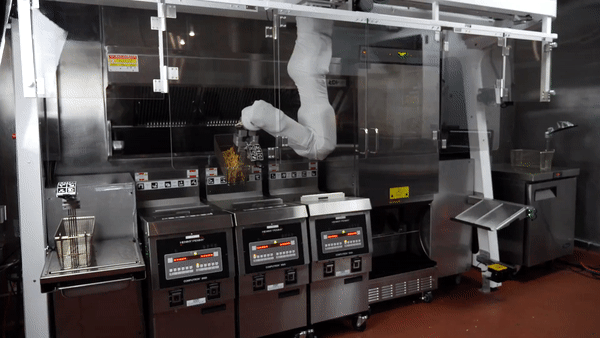
A robot arm can dispense pills, pack packages, and can also flip burgers. The COVID 19 labor shortage accelerated adoption of robotics in the fast food industry. In 2020, White Castle piloted Flippy, the burger flipping robot. It has since expanded the pilot to more than 100 stores.
Meanwhile, McDonald’s is pursuing an even greater level of automation. Rather than human and robots working together, it is experimenting with a full automated drive-through solution, complete with voice activated AI order taking and a robot fryer. Others are soon to follow; KFC partnered with Hyundai to develop a chicken frying robot.
Other applications
- Someone has to keep the pipes clean. Using a combination of collision resistant drones and cylindrical robots, more and more cities are deploying robots to inspect and maintain sewer pipes.
- For $1,850, you can have a robot porter follow you around and carry your stuff for you.
- A lot of startups are pursuing robot sidewalks to make last mile delivery.
Some are employing R2-D2 like robots for security patrols.
All hail the Roomba
And finally, we end with one of the most ubiquitous and most common robots of them all. The friendly robot vacuum. There’s a lot of players in this space, and the largest might be iRobot, the creator of Roomba, who has sold more than 20 million units.









